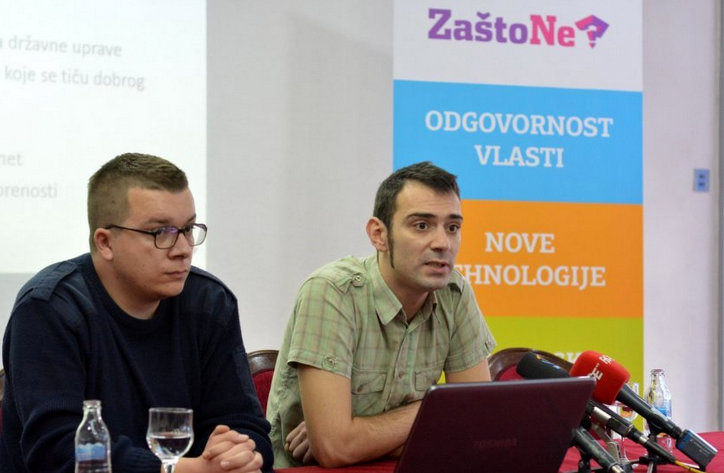Results of monitoring of the openness of governments in the region

Today in Sarajevo activists of the UG „Zašto ne“ presented preliminary results of the monitoring project of the openness of governments in the region called DURBIN. At the regional level, the monitoring aimed at evaluating four governments: the Council of Ministers of Bosnia and Herzegovina, the Government of Serbia, the Government of Montenegro and the Government of Macedonia. In Bosnia and Herzegovina it included also the entity governments: the Government of the Federation of Bosnia and Herzegovina and the Government of Republic Srbska, and all the ministries of those governments.
The monitoring is based on the DURBIN methodology, consisting of 53 indicators for the country governments and 60 indicators for ministries and the entity governments. These indicators were designed to measure the use of the Internet and new technologies in communication between the public institutions and citizens. According to the preliminary results in Bosnia and Herzegovina, the most open government is the Government in Republic Srbska with a score of 49.06%, it is followed by the Council of Ministers with the score of 37.74% , and the Government of FBiH with the score of 35.85%.
Regarding the ministries, the highest score was achieved by the Ministry of Justice reaching 36.67% of the total score, the worst result belongs to the Ministry of Transport and Communications and the Ministry of Foreign Trade and Economic Relations, who both scored only 15%. The Ministry of Foreign Affairs was only a bit better, scoring 16,67%. In the most open ministry of the Government of FBiH — the Ministry of Education and Science, the score reached 48.33%, while the lowest result was achieved by the Ministry of Transport and Communications (18.33%) and by the Ministry of Refugees and Displaced Persons (23.33%).
In Republic Srbska, the best result was achieved by the Ministry of Interior Affairs with 41.67% score while, the Ministry of Education and Culture of RS met only 15% of the indicators. Besides that, among the least open ministries in the Government of RS are the Ministry for Refugees and Displaced Persons with 18.33% score, and the Ministry of Family, Youth and Sports, with 20% score.
Comparing the country governments, The Council of Ministers of Bosnia and Herzegovina holds only the third place (37.74%), while the most transparent government in the region — the Government of Montenegro meets 52.83% of the indicators. The only government in the region that got worse results than the Council of Ministers is the Government of Macedonia.
If one looks at the results within BiH, it can be concluded that neither the government nor any of the analyzed ministries fulfilled even half of the indicators. Almost no ministry at the state or at the entity level publish reports on budget execution for the three previous years and only rarely publish various reports and work plans for the current year. A large differences between the ministries within the same level of authority, can be a consequence of lack of common strategy developed for communication and presentation of data and information using the Internet. If we look at the indicators measuring the openness, they show that the poorest segment at all levels of government is the transparency of the budget. Also, all levels of government in BiH achieved a very bad result regarding the communication with the public using social networks or through the online forms on the websites. BiH authorities must do more in order to make their work more transparent and open.
DURBIN project is conducted by civil society organizations, UG „Zašto ne“ from Bosnia and Herzegovina, “CRTA” from Serbia, “Center for Democratic Transition” (CDT) from Montenegro and the “MOST” from Macedonia. It included the following institutions: The Government of Montenegro and its 16 ministries, the Government of the Republic of Macedonia and its 15 ministries, the Government of the Republic of Serbia and its 17 ministries, the Council of Ministers of Bosnia and Herzegovina and its 9 ministries, the Government of the Federation of BiH and its 16 ministries and the Government of the Republic Srbska its 16 ministries. Web sites of institutions and their social networks channels on Facebook and Twitter were the source of the data for the monitoring.
DOWNLOAD: The methodology